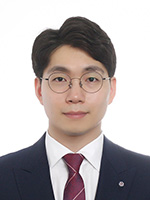二维过渡金属二卤代化合物的电子、光电和能源相关应用
日期:2022/11/18 – 2022/11/18
学术讲座:二维过渡金属二卤代化合物的电子、光电和能源相关应用
主讲人:Sangyeon Pak, Assistant Professor, School of Electronic and Electrical Engineering at Hongik University (Korea)
时间:2022年11月18日(周五)上午10:00 – 11:30
讲座摘要
Van der Waals (vdW) semiconducting materials, especially monolayered transition metal dichalcogenides (TMDCs, e.g. MoS2, WS2, etc.), have garnered intense interests due to their 2D structure that enables super flexibility, optical transparency, and facile integration with disparate materials through vdW forces. Furthermore, they show excellent electrical and photo‐electrical properties even when they are thinned down to a monolayer, which lead to enormous possibilities in the creation of a wide range of ultrathin, flexible, and transparent optoelectronic devices with new and unique functionalities. In this presentation, I will introduce some of advances made towards engineering these 2D vdW materials including a facile synthetic protocol designed for the production of large area TMDC monolayers and heterostructures, strain engineering in 2D materials, finding new copper sulfide electrode materials for various electronic and optoelectronic applications, hydrogen evolution reaction based on 2D TMDC monolayers. These findings and understandings present a significant step toward the development of various 2D materials with interesting properties.
主讲人简介
 Sangyeon Pak is an assistant Professor in the School of Electronic and Electrical Engineering at Hongik University, Korea. Prior to joining Hongik University, he was a postdoctoral researcher (2019-2022) in the department of physics at Sungkyunkwan University. He received his Ph.D. in Engineering Science from University of Oxford and B.S. in Electrical Engineering from University of Wisconsin-Madison. His research involves the growth of 2D materials, exploration of fundamental physical properties and new functions, and the design and development of novel nanoscale devices for next generation electronics and optoelectronics devices.
Sangyeon Pak is an assistant Professor in the School of Electronic and Electrical Engineering at Hongik University, Korea. Prior to joining Hongik University, he was a postdoctoral researcher (2019-2022) in the department of physics at Sungkyunkwan University. He received his Ph.D. in Engineering Science from University of Oxford and B.S. in Electrical Engineering from University of Wisconsin-Madison. His research involves the growth of 2D materials, exploration of fundamental physical properties and new functions, and the design and development of novel nanoscale devices for next generation electronics and optoelectronics devices.
